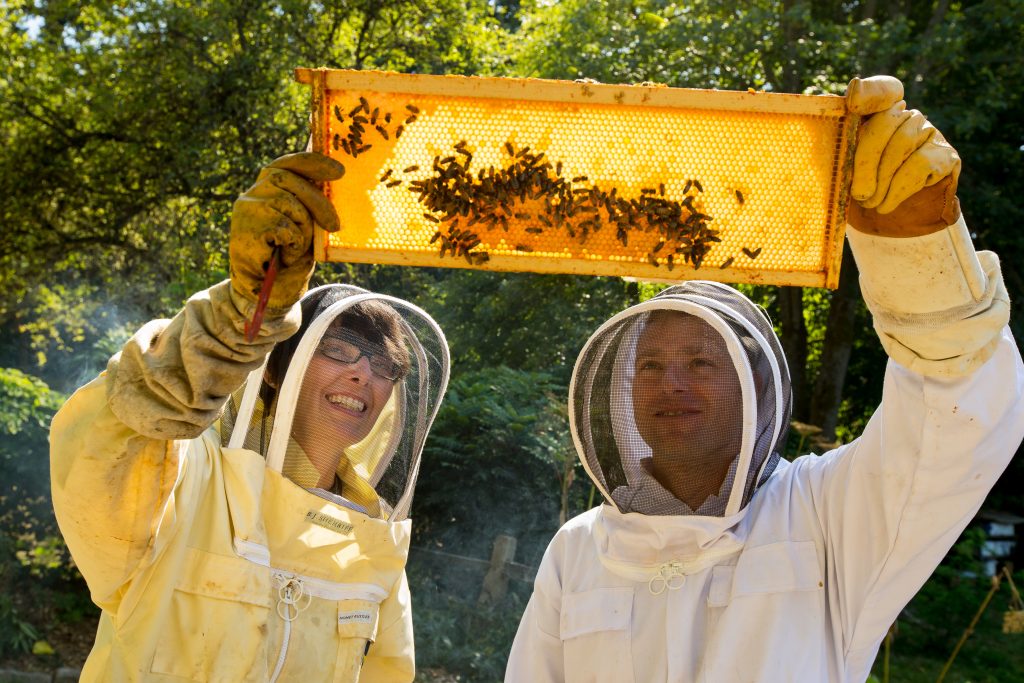
‘Beekeeper’ Hackathon project sweetens cross-pollination of tech and tradition
Around Microsoft and other tech campuses, buzzing sounds usually suggest the whirr of a hard drive or a roomful of servers. But drive 20 minutes from Redmond, Washington into Seattle and that humming is a living thing – many living things. At the Washington Park Arboretum, there is an apiary where hundreds of thousands of honeybees live in eight hives.
Some may be surprised to learn that unless they sense a threat to their queen or their hive, bees are usually pretty low-key. They just go about their business of gathering nectar and pollen and making honey. They do this pretty well on their own, but there’s a lot of research and technology that could help colonies like this thrive.
The //oneweek Hackathon, which takes place the week of July 27, gives Microsoft employees the opportunity to think outside the box, to dream big and try to make their ideas a reality. For James O’Gorman, whose family raises bees back in the U.K., it’s a chance to work with a team to conceptualize solutions to help sustain crop production and ensure a longer life for honeybees.
The Beekeeper project aims to use technology for forage reconnaissance, hive management and crop management. Autonomous drones would serve a dual purpose. Miniature drones equipped with pollinating brushes could help increase crop yields in places where bees are scarce, as well as monitor in-hive conditions, while bigger drones would gather critical data for the scientific and agricultural communities. The drones would never replace real bees, but they could complement the bees’ work.
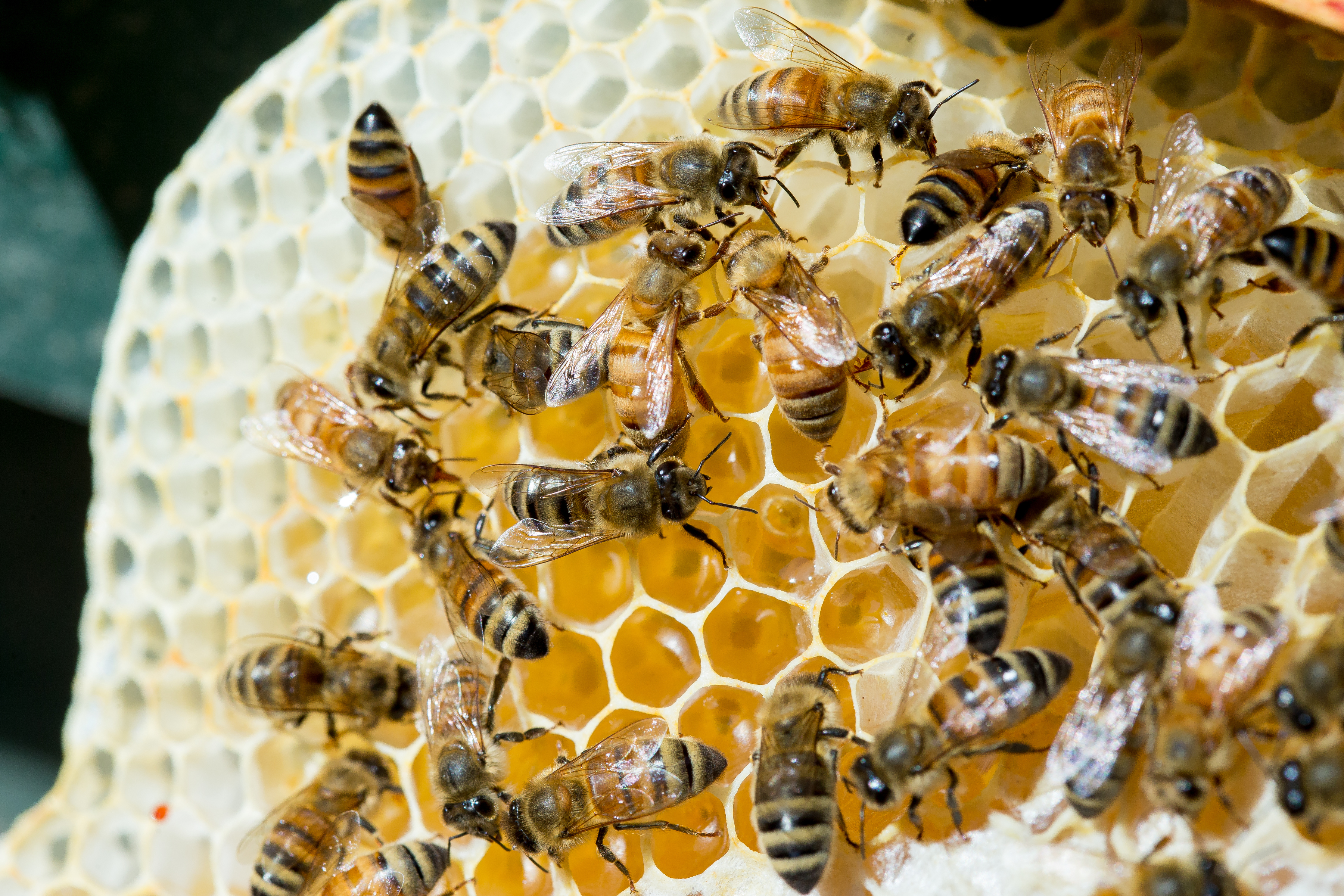
For O’Gorman, the Hackathon is just another example of the positive shifts he’s seen at the company since he joined it in 2006.
“There is a real sense of a more empowered and connected community within Microsoft. Employees have been tasked with the freedom to solve issues in more creative ways and rewarded for doing so,” says O’Gorman, an anti-malware service architect on the Product Release and Security Services team. He designs solutions to ensure Microsoft never releases software with malware in it. “The culture of change that Satya has invoked has resulted in innovation that has taken the tech industry by surprise. That can only be a good thing!”
The Hackathon, which the Microsoft Garage plans and executes, brings together people who may not usually work together on any other project. In this case, while seeking help with the Hackathon project, O’Gorman happened upon Krista Conner, Senior Program manager for the Planning & Launch Services group (P&LS) at Microsoft. Her name was familiar– they had worked on a product launch together previously. He ran his original project idea by her, and expanded it thanks to her vast knowledge about beekeeping. She is a certified Journeyman Beekeeper in the state of Washington as well as the immediate past President of the Puget Sound Beekeepers Association, the non-profit volunteer group responsible for the apiary at the Washington Park Arboretum.
The Seattle-based club has about 250 members, and at Microsoft, there’s a global distribution list of about 60 active beekeepers, including Conner. She credits the media coverage of Colony Collapse Disorder (CCD) for an increased interest in the hobby and help for the bees. She and other volunteers come out every few weeks to inspect the arboretum’s hives and to check on her own, which are strewn throughout the area in the backyards of homeowners who agree to host them.
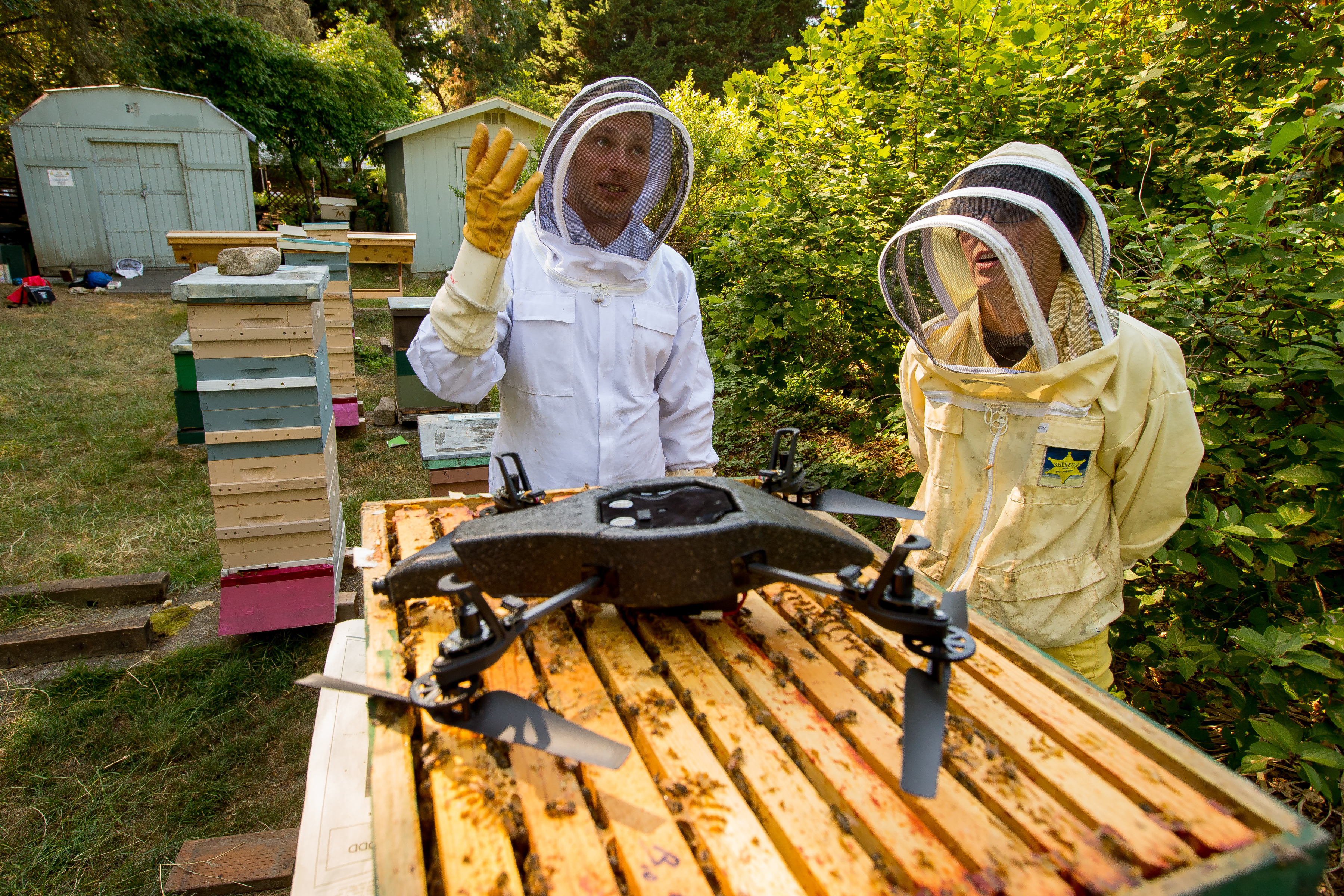
O’Gorman also thinks Bing Maps would be able to show pollination coverage and distribution of GPS-tracked drones. Those drones would also carry sensors to measure air quality, temperature, humidity and other metrics. That information would upload to Azure to provide year-on-year data for science research. (This comes in handy when you’re dealing with bees bred in a dry climate like California and then imported to the usually wet wonderland of the Pacific Northwest.)
“If you’re rearing queens, it’s helpful to know where they mate,” Conner says. “Congregations of male bees – also called drones – gather in specific areas to ‘cruise,’ waiting for queens to show up. They mate in mid-air. If I’m a beekeeper and I’m rearing queens, then I want to know and possibly influence the bee genetics of drones where my queens will mate. I’d want to use mechanical drones to find those [bee] drone congregation areas.”
These mechanical drones could also take photos of bee populations and forage locations – sites bees go to find natural supplies for pollen and nectar, usually within a three-mile radius of their hives – to provide research data on bee numbers and whether there is sufficient forage for the area’s bee populations. Beekeepers can use that information to place their hives, like the wooden columns stacked and packed with frames of honeycombs at the Arboretum, in the most optimal locations, or take steps to plant forage to provide vital nutrition for bees in that area if it is lacking
Sensors and cameras placed inside hives, as well as augmented reality, could be used for remote inspection of hives and crops. That could be very useful for beekeepers and farmers who tend to apples, coffee, almonds and other crops and fruit.
“You can’t totally replace a beekeeper by sending drones in there, but if you have a beekeeper with thousands of hives, they’re not able to go in each one every week. That would be an invaluable asset for them, to be able to use that telemetry,” Conner adds.
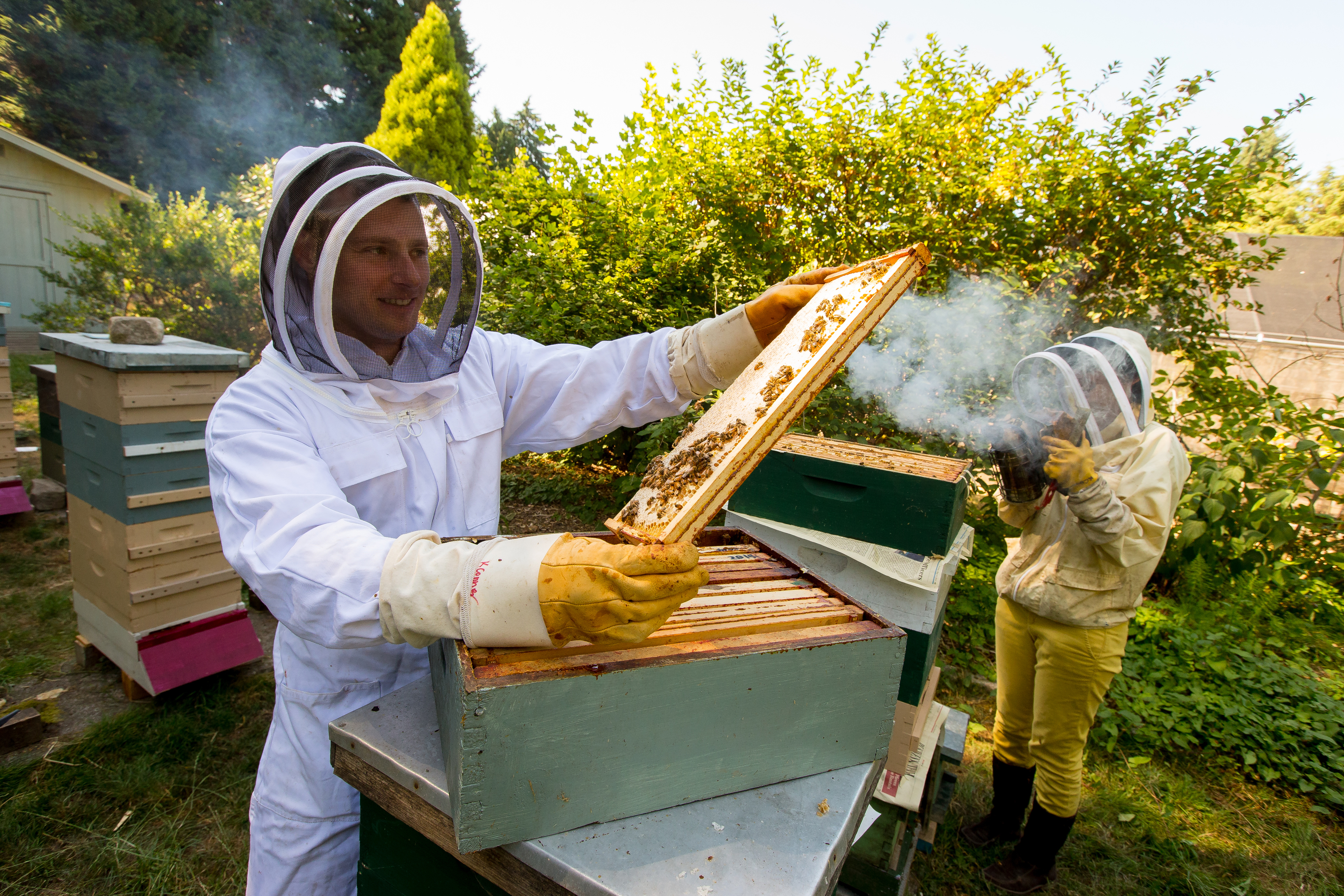
For Conner, who participated in the Hackathon last year with her P&LS team, it’s been a new experience working on a project with a different group.
“Getting to engage in problem solving with people and teams I may not otherwise work with, looking at a problem through different lenses, and finding a solution that might be totally off the wall – that is fun and inspiring,” she says.
For her, beekeeping helped her cope with being diagnosed with breast cancer in 2007. She knew nothing about bees then, but she is now this project’s subject matter expert.
“I became really fascinated with them. There’s always something new to learn. You can read about it, but seeing them in action and having that in-hive experience is what comes next,” Conner says. “Now it’s become an obsession.”
O’Gorman comes by his interest through being raised on a farm, through which sales of fruits and flowers pollinated by bees helped put food on the table. His mother took up beekeeping about a decade ago and now has 25 hives as an award-winning hobbyist – even though she’s highly allergic to bee stings.
“I love honey. The variations in honey are fascinating,” he says. “When my parents got into it, I learned how to inspect the hives and spin honey off the combs. Everything is sticky; we’re doing this in an old farmhouse. But you reap the benefits.” O’Gorman expects to get his own hives this fall.
The third member of the team is helping with the more technical aspects of the project.
“My role in the project is to help identify possible telemetry options and assist with some of the possible visualizations,” says Jose Velez, who also works daily with O’Gorman. “I’m passionate about translating data to useful information. What also interests me about this project is the use of technology to help mitigate an environmental issue with an economic impact.”
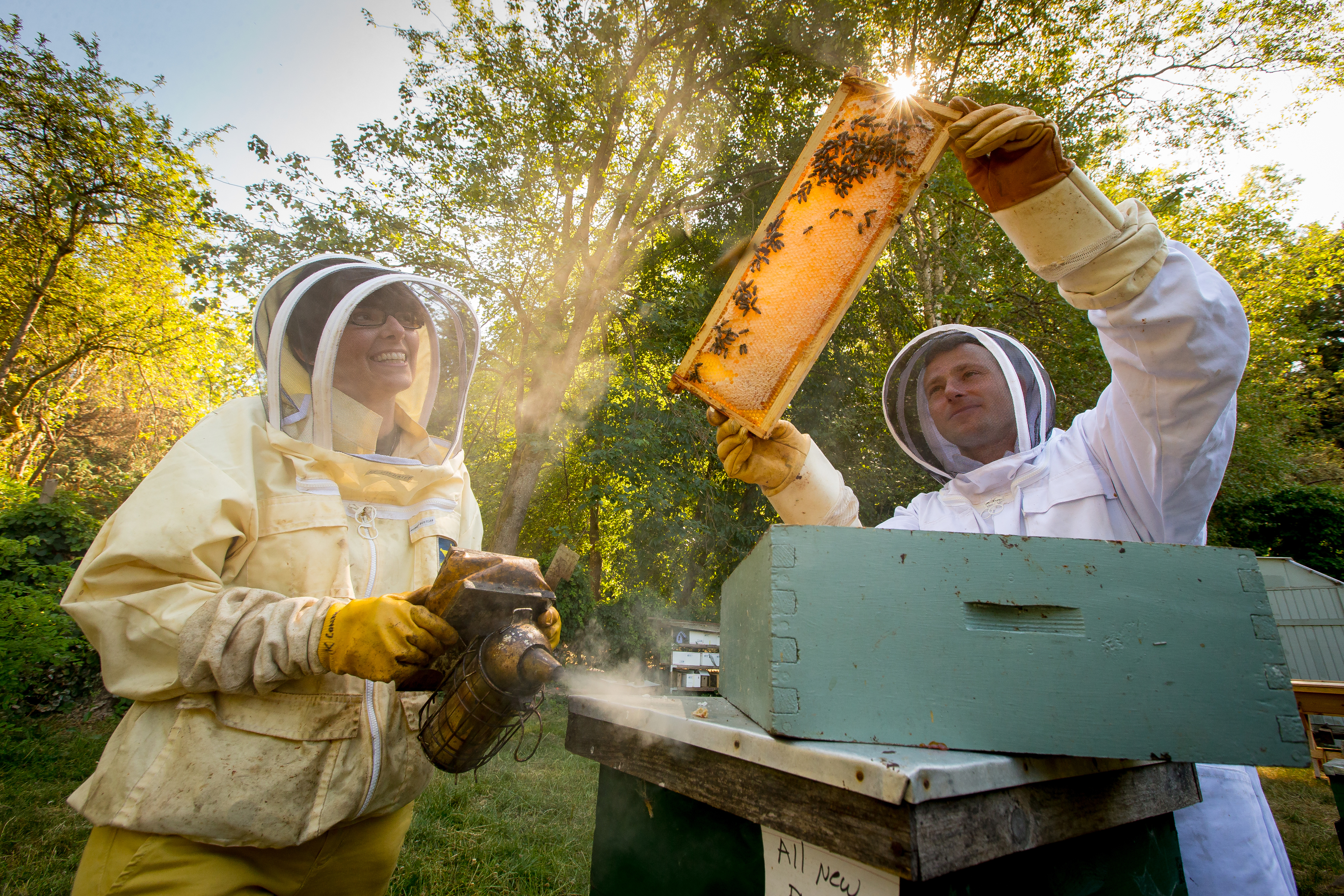
O’Gorman is still in search of more developers who are more mobile oriented, and who are familiar with Azure and can manage it remotely through a Windows Phone Store app.
“I strongly believe that the Hackathon can spark innovation and bring great talent together to innovate fast,” says Velez. “Microsoft’s changing culture is all about innovation and helping people achieve more. Allowing people to share ideas, and providing the means to network with a pool of so many talented people, provides a huge opportunity to anyone in the company with ideas of any size.”
• Puget Sound Beekeepers Association – 100 percent volunteer run. Free apiary work parties – come inspect hives and match your hours or dollar donations to the organization through //Give
• Are you a beekeeper who also works at Microsoft? Want to collaborate with your peers about beekeeping or simply have a question about bees? Send it to the MS Bees alias [email protected]
Lead photo: Krista Conner (left) and James O’Gorman inspect hives at the Puget Sound Beekeeper Association’s apiary, located at the Washington Park Arboretum. (Photo credit: Scott Eklund/Red Box Pictures.)















